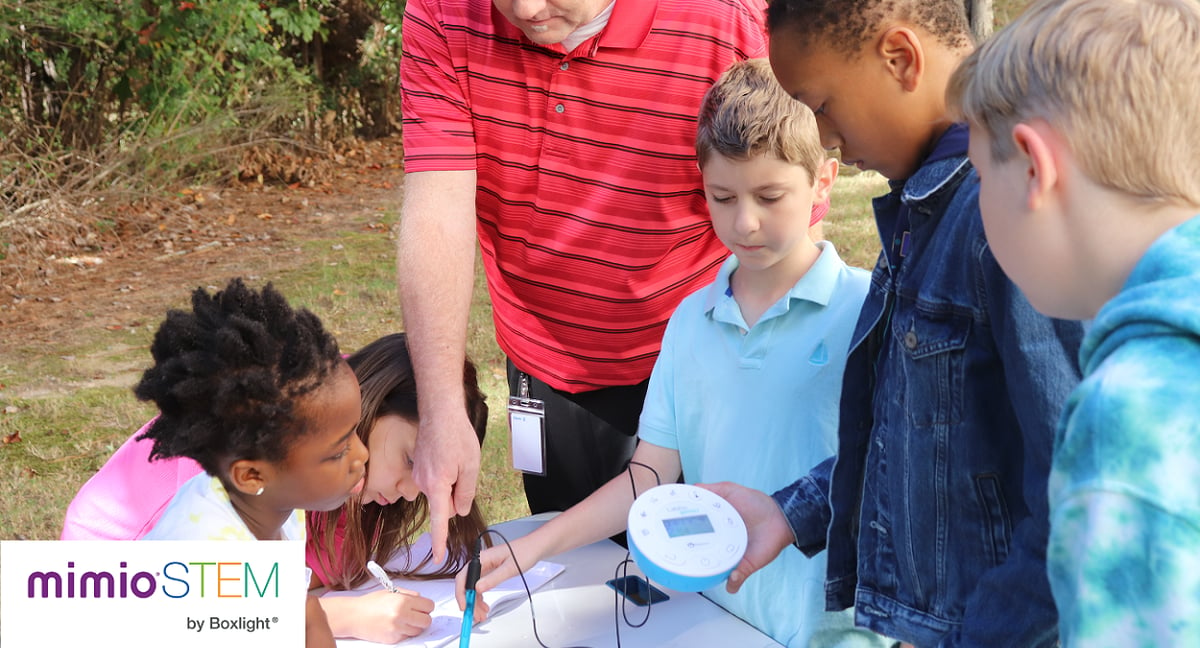
A general belief is that incorporating STEM (science, technology, engineering, mathematics) learning is crucial to help spark students’ interest in STEM-related careers where the demand is steadily increasing. STEM learning boosts vital skills such as critical thinking, perseverance, creativity, and problem solving, skills that are important for navigating life and its challenges.
While the focus on STEM education tends to begin in middle school, purposeful STEM instruction should begin at the earliest grades where these key skills are also important. A National Science Board (find it here: Elementary and Secondary STEM Education), shows that students in the U.S. are not performing at the level of students in other countries especially in the areas of math and science. By implementing STEM instruction, even very young children will learn how to work through problems, collaborate with others, and communicate their ideas and findings.
Of course, teachers are juggling lesson planning on different concepts and topics, facilitating instruction that engages and motivates, and analyzing student assessments to guide where instruction should go next. Add STEM-focused lessons and projects and, inevitably, some subjects will not get the attention needed. Fortunately, there are resources available that are hands-on, rigorous, standards-aligned, and highly engaging. The award-winning MyStemKits curriculum is one of these resources – an online collection of STEM lessons, experiments, and Design Challenges developed for use with tools such as 3D printers, robotics systems, and portable STEM labs.
The Labdisc has become a popular STEM tool in hundreds of classrooms because of its portability and user-friendly design. The Labdisc is a wireless data logger that incorporates sensor technology to promote inquiry-based learning in a variety of science fields including biology, chemistry, physics, environmental science, and geography for students in kindergarten through 12th grade. One of the standout features of the Labdisc is that it’s portable and can be used inside and outside of the classroom.
In addition, the Labdisc is easy to setup, has automatic sensor timing, and calibration which allows teachers to maximize time for experiments and enrich the STEM learning experience for students.
Seven Labdisc lessons were added to the MyStemKits online platform, including a project-based learning (PBL) activity that is appropriate for students from K through 12:
- Project Nest Box (Grades K-12) - Learn all about birds, weather, and the interactions between humans and the world around them in this real-world activity. Rather than a full lesson, this is more of an inspiration guide. Pair it with standards and questions of your choice as you evaluate what makes for the best bird nesting box! Then, collect and share your results through a paper, presentation, website, or community event to increase awareness of the issue.
- What is the Weather Like Today? (Grade K) - Explore weather over a couple of days in this interdisciplinary activity to gain a deeper understanding of weather patterns. Students will then use the data they collect to practice comparing values.
- Weather & Climate (Grade 3) - Investigate weather patterns over the course of a week and compare daily weather to overall seasonal climate. Repeat this activity at various times of year to gain a more-complete understanding of weather and climate.
- What’s the pHuss? (Grades 4-5) - Explore material attributes by comparing the pH of common liquids. Students will learn about the pH scale and investigate the pH of various liquids – from drinks to household cleaners to explore how the pH of the liquid is optimized for the purpose at hand. Students will also be challenged to consider how the pH impacts our daily lives and environments by doing a small research project that combines their in-class findings with outside sources. They must then compile their findings into a paper or presentation.
- What’s It Like Out There? (Grades 5-12) - Send your Labdisc into near space with this out of this world activity! This lesson idea came to us from a group of students who decided to send their Labdisc into space to evaluate the atmosphere. Based on their success, we’ve put together a list of general guidelines and suggestions if you decide to do the same. Rather than a full lesson, this is more of an inspiration guide. Pair it with standards and questions of your choice as you evaluate the atmosphere up into near space.
- Lenz Law (Grades 6-12) - Explore the relationship between electricity and magnetism through this hands-on activity. Students will get a chance to investigate the Faraday and Lenz Law by building and testing an electric field conductor created with copper wire and discover the impact a magnet can have on that field.
- Ohm’s Law (Grades 6-12) - The purpose of this activity is to explore Ohm’s Law in parallel and series circuits, to create a hypothesis. The hypothesis will be tested during an experiential activity using the Labdisc current and voltage sensors. Throughout the activity, students are required to evaluate and utilize a variety of expressions to mathematically evaluate the results of their experiment.
The importance of implementing high-quality, engaging, and innovative STEM education has increasingly become clear and can be successfully done with easy-to-use and learn STEM products such as MyStemKits curriculum and the Labdisc portable STEM lab.
For more information on the Labdisc portable STEM lab which includes standards-aligned lessons, visit www.boxlight.com/products/stem-education/labdisc-portable-lab.
To get a free trial of MyStemKits to explore its research-based lessons and activities, go to www.boxlight.com/products/stem-education/mystemkits-stem-curriculum.
Boxlight has award-winning solutions that can be customized to fit the needs of any classroom. Learn more at www.boxlight.com.


